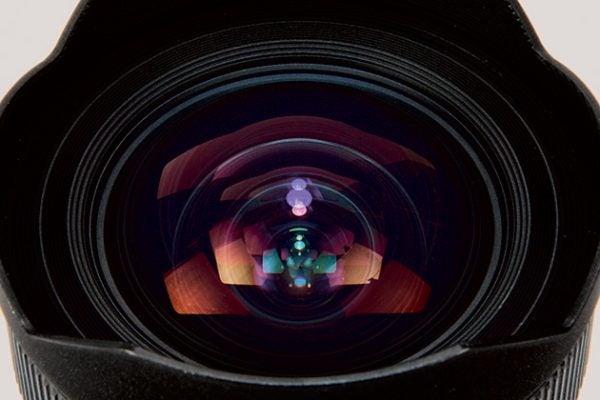Andy Westlake considers some of the pros and cons of buying second-hand lenses and recommends a few of his favourites.
I’m pretty sure that the majority of photographers would love to buy their lenses brand new. Aside from the simple pleasure of taking a pristine new optic out of the box, buying new has several practical advantages. You get a nice long warranty for peace of mind if your lens goes wrong – up to five years in some cases – and you can be pretty sure nobody has dropped, damaged or maltreated your new toy.
Unfortunately, in the real world, buying everything new is beyond the reach of many, and considerable savings can be had from picking up used kit. This is especially the case with older or discontinued models, and while these may not be technically as good as ultra-sharp modern designs, many impressive lenses can be bought for a lot less than their current equivalents. When I was starting out in photography I bought almost all my lenses second-hand, and even now I like a bargain as much as the next man.
Of course, there are potential pitfalls when buying used kit, especially in these days of buying privately online via the likes of eBay. You don’t necessarily know for sure whether you’re getting exactly what’s shown or described, or even that it works perfectly.
In my experience, the vast majority of sellers act in perfectly good faith, but some may not be telling the whole truth, and others simply don’t know enough about what they’re selling to give a completely accurate picture, especially if they’re acting on behalf of a friend or relative.
To get the best chance of buying a lens in good condition, look out for lots of clear, high-resolution pictures showing a near- unblemished optic: this suggests the lens has been looked after well.
Be wary of dented filter rings, a sure sign that the lens has been dropped.
Make sure the glass is described as clean, otherwise there’s a risk the seller is trying to hide something. Minor scratches on the front element aren’t usually a problem, but a lens with internal haze or fungus will likely require professional cleaning.
If all this sounds too much like hard work, you can always use a dealer. Sadly, there aren’t as many camera shops around selling used equipment as there used to be, but you’ll find a good selection in the back pages of Amateur Photographer.
You may pay a bit more, but you should get a lens that’s been checked over and works properly, along with the option of returning it if you decide you’re not happy, and a warranty in case it goes wrong in the first few months of you owning it. For many people, these advantages, and the additional peace of mind, are well worth paying extra for.
In general, there are many more lenses on the market in DSLR mounts than there are for CSCs, simply because the systems have been around much longer. Because of this, we’ve concentrated on DSLR lenses for this article. All are from third-party makers, as these are often overlooked, and as such can prove to be even more of a bargain than the camera manufacturers’ own lenses. They’re also available in most major mounts.
Second-hand lenses – recommendations
Sigma 30mm f/1.4 EX DC HSM
Price: £150-£220
 In early 2013 this lens was replaced by an all-new model in Sigma’s ‘Art’ line, but the original 30mm f/1.4 is still a very fine lens. It uses a hypersonic motor for silent autofocus, with full-time manual override available at any time. As usual for Sigma’s EX lenses, build quality is very good, and the lens is available for all DSLR systems.
In early 2013 this lens was replaced by an all-new model in Sigma’s ‘Art’ line, but the original 30mm f/1.4 is still a very fine lens. It uses a hypersonic motor for silent autofocus, with full-time manual override available at any time. As usual for Sigma’s EX lenses, build quality is very good, and the lens is available for all DSLR systems.
The 30mm is the only third-party fast ‘normal’ prime for APS-C DSLRs, offering a 45mm equivalent angle of view. This gives a very natural perspective for everyday shooting, and the fast aperture is ideal for low light and shallow depth of field shooting.
Tokina AT-X Pro DX 12-24mm f/4
Price: £150-£250
 Tokina’s 12-24mm f/4 was one of the earliest wideangle zooms for APS-C DSLRs, and offers an 18-36mm equivalent angle of view (19-38mm on Canon DSLRs). It’s an extremely solidly made lens that features a focus clutch mechanism, whereby pulling the focus ring towards the camera engages manual mode. Nikon owners should note that only the later ‘II’ version has a built-in autofocus motor.
Tokina’s 12-24mm f/4 was one of the earliest wideangle zooms for APS-C DSLRs, and offers an 18-36mm equivalent angle of view (19-38mm on Canon DSLRs). It’s an extremely solidly made lens that features a focus clutch mechanism, whereby pulling the focus ring towards the camera engages manual mode. Nikon owners should note that only the later ‘II’ version has a built-in autofocus motor.
Tokina has a strong reputation for making wideangle zooms, and the 12-24mm is impressively sharp at all settings. Its main weakness is quite strong chromatic aberration that’s visible across much of the frame, but this can be substantially removed in post-processing. The lens doesn’t offer quite such a wide view as its rivals, but it’s still much more expansive than a kit zoom.
Tamron SP AF 17-50mm f/2.8 XR Di II LD Aspherical (IF)
Price: £100-£150

Tamron’s classic fast normal zoom has been replaced by an image-stabilised version (at least in Canon and Nikon mounts), but it’s still a great choice for owners of APS-C DSLRs looking for high-quality optics. The fast maximum aperture makes it especially useful for indoor or low-light shooting.
The 17-50mm was always a popular lens, and this means it’s in plentiful supply on the second-hand market, which in turn keeps prices low. Nikon users should note that old models of the lens don’t have a built-in autofocus motor, which is needed for AF on entry-level SLTs. This was added in the 2008 version (model A16NII).
Sigma 17-70mm f/2.8-4.5 DC Macro
Price: £90-£130
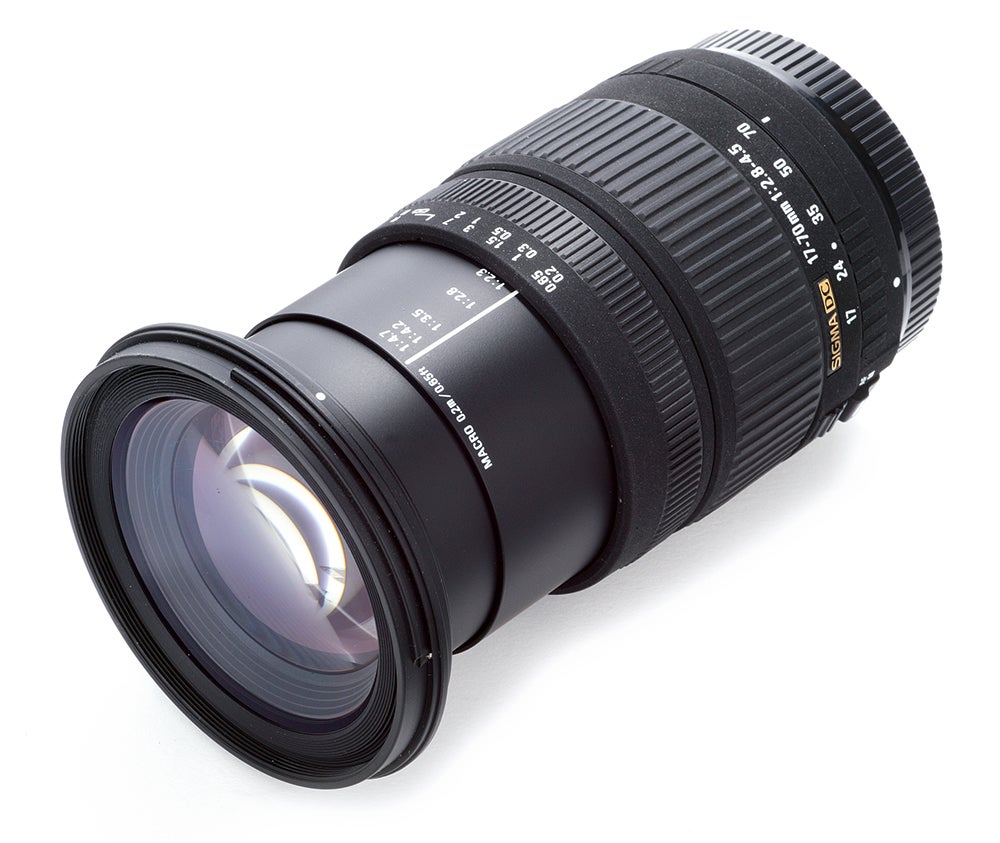 If you’re looking for a more versatile replacement for your DSLR’s kit zoom, the Sigma 17-70mm f/2.8-4.5 DC may just be the ticket. With a 26-105mm equivalent range, the lens offers an unusually fast maximum aperture for its type, along with a usefully extended range compared to typical 18- 55mm zooms. The minimum focus distance is just 20cm through the entire zoom range, allowing close-up shooting with a useful 0.43x magnification. Current prices make this lens an absolute bargain.
If you’re looking for a more versatile replacement for your DSLR’s kit zoom, the Sigma 17-70mm f/2.8-4.5 DC may just be the ticket. With a 26-105mm equivalent range, the lens offers an unusually fast maximum aperture for its type, along with a usefully extended range compared to typical 18- 55mm zooms. The minimum focus distance is just 20cm through the entire zoom range, allowing close-up shooting with a useful 0.43x magnification. Current prices make this lens an absolute bargain.
Nikon owners should be aware that the original 2006 model of this lens has no built-in autofocus motor, and look out for the later HSM version released in 2007.
A later iteration of this lens adds image stabilisation along with a faster f/4 maximum aperture at 70mm, but obviously this comes at a higher price. Both models are available in Canon, Nikon, Pentax, Sigma, and Sony Alpha mounts.
Sigma 105mm f/2.8 EX DG Macro
Price: £150-£210
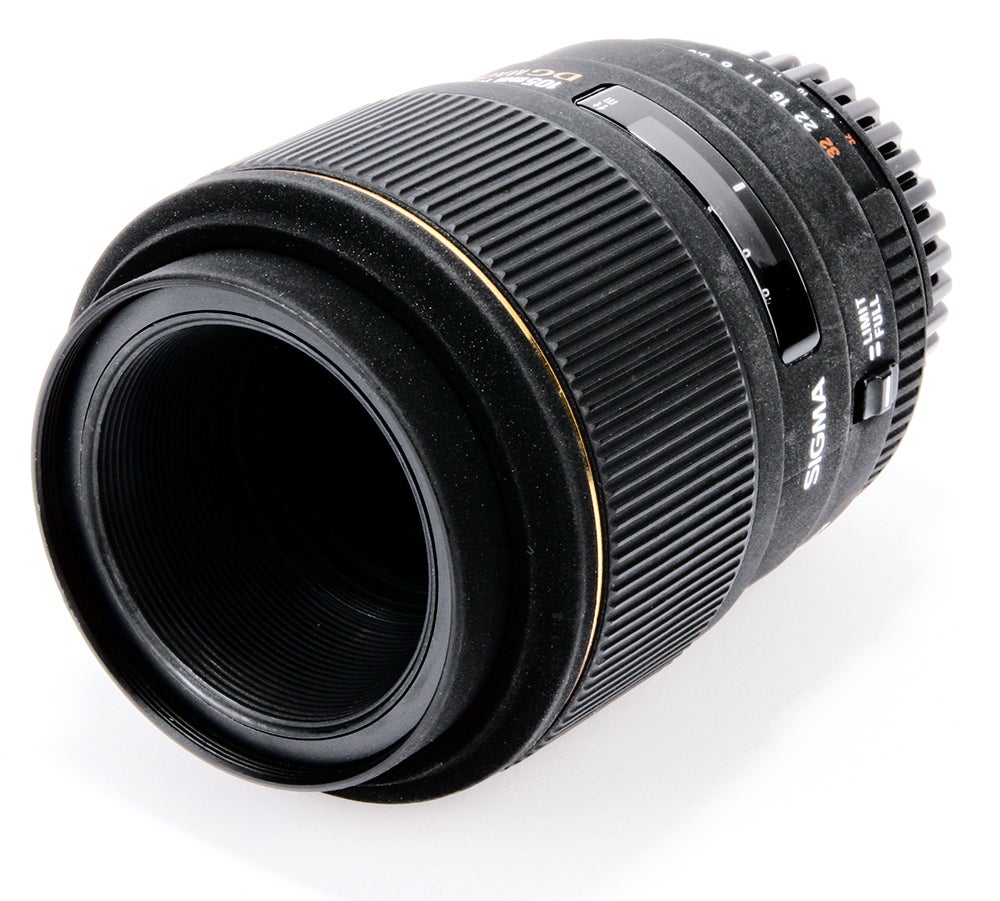 Now replaced by an optically stabilised version, the older Sigma 105mm f/2.8 lens is still one of the best macro lenses that you can buy, and one that we have used in the AP studio to test cameras for a number of years.
Now replaced by an optically stabilised version, the older Sigma 105mm f/2.8 lens is still one of the best macro lenses that you can buy, and one that we have used in the AP studio to test cameras for a number of years.
The Sigma 105mm f/2.8 EX DG Macro is constructed of 11 elements in 10 groups, and its 460g body has a solid feel. Its minimum focus distance of 31cm provides a true 1:1 macro magnification, and a good working distance for any budding macro photographer.
Like the Tamron 90mm f/2.8 Macro featured on the opposite page, this lens features a focus clutch system whereby pulling the focus ring towards the camera engages manual focus. The lens barrel extends substantially during focusing, which means that autofocus isn’t very fast compared to more modern macro lenses.
While the optical stabilisation and faster focusing of the new lens are useful, and at £330 it is really good value, if you get lucky you can find the previous 105mm f/2.8 macro lens for as little as half that price. In our tests we’ve found that at the aperture settings most commonly used for macro images, there is very little difference in sharpness between the old and new Sigma 105mm f/2.8 macro lenses.
Tamron 18-270mm f/3.5-6.3 Di II VC PZD
Price: £150-£200
 Although superzoom lenses can receive negative press for being jacks of all trades but masters of none, this shouldn’t really be the case. While the image quality may not be able to match a shorter zoom, and definitely won’t be as good as a fixed-focal-length lens, the convenience of having one tucked in your camera bag makes it ideal for travelling.
Although superzoom lenses can receive negative press for being jacks of all trades but masters of none, this shouldn’t really be the case. While the image quality may not be able to match a shorter zoom, and definitely won’t be as good as a fixed-focal-length lens, the convenience of having one tucked in your camera bag makes it ideal for travelling.
With an impressive 15x zoom, the Tamron 18-270mm f/3.5-6.3 Di II VC PZD is designed for APS-C-sensor DSLR cameras, giving the equivalent of a 27-400mm on full frame. With such a huge range, it can cover the vast majority of images that you would wish to take. Tamron’s Vibration Control image stabilisation is particularly impressive, and is certainly needed when shooting at telephoto settings. It’s a great general-purpose travel lens.
Tokina AT-X Pro 50-135mm f/2.8 DX
Price: £190-£300

The 50-135mm f/2.8 DX is a fast telephoto zoom for DSLRs with APS-C sensors, and offers a 75-200mm equivalent range. Like the similar Sigma 50-150mm f/2.8 EX DC HSM, it was designed to complement a fast normal zoom of the 16-50mm type, giving a much more portable alternative to a 70-200mm f/2.8 zoom. It combines good image quality with Tokina’s usual bombproof build, and was made in Canon and Nikon mounts, with the latter lacking a built-in focus motor. The Pentax DA 50-135mm f/2.8 SDM is essentially the same design.
Perhaps surprisingly, this type of lens never really took off, despite its attractions, with photographers still preferring to buy 70- 200mm optics. This means it’s relatively scarce on the used market, and prices are still quite strong.
Sigma 12-24mm f/4.5-5.6 EX DG HSM
Price: £270-£350
 When it was launched, the Sigma 12- 24mm f/4.5-5.6 had the distinction of being the widest rectilinear zoom lens ever made for full-frame cameras. It also offers a useful 18-36mm equivalent range on APS-C cameras, which makes it a particularly attractive option to photographers who use both formats, and a built-in HSM motor offers silent autofocus. However, weighing a hefty 600g, it’s quite a bit bulkier than wideangle zooms specifically designed for the smaller sensor size.
When it was launched, the Sigma 12- 24mm f/4.5-5.6 had the distinction of being the widest rectilinear zoom lens ever made for full-frame cameras. It also offers a useful 18-36mm equivalent range on APS-C cameras, which makes it a particularly attractive option to photographers who use both formats, and a built-in HSM motor offers silent autofocus. However, weighing a hefty 600g, it’s quite a bit bulkier than wideangle zooms specifically designed for the smaller sensor size.
The 12-24mm has since been replaced by an all-new ‘II’ version that includes updated optics to reduce distortion and chromatic aberration. Both models have built-in non-removable lens hoods to protect their bulbous front elements. A side effect of this is that it’s not possible to use screw-in filters, but adapter rings are available for use with square filters such as the Lee system.
Sigma 70-200mm f/2.8 EX DG Macro HSM
Price: £300-£350
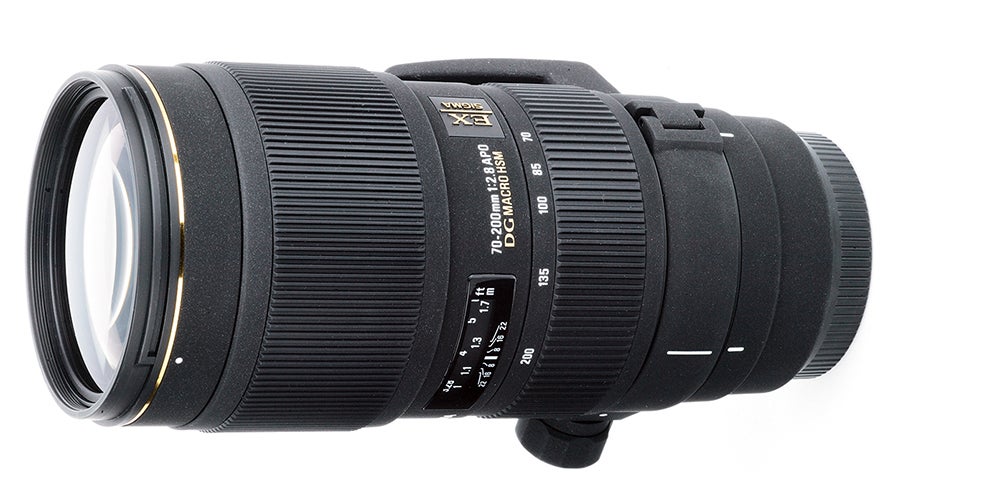
Before its current image- stabilised model, Sigma made a long line of 70-200mm f/2.8 lenses, with four iterations starting from the first 1999 design. The first ‘DG’ update added coatings on the rear element for use with DSLRs, and the 2006 ‘Macro’ version reduced the minimum focusing distance to 1m. A revised 2007 ‘HSM II’ model featured improved optics.
All these lenses are available on the second-hand market, with the most recent model not surprisingly commanding the highest prices. The slightly older ‘Macro’ model represents good value, at around the £300 mark in good condition. If you’re looking for a fast telephoto zoom on a budget, this lens
is a great choice.
Tamron 200-500mm f/4.5-6.3 SP AF Di (IF)
Price: £300-£400
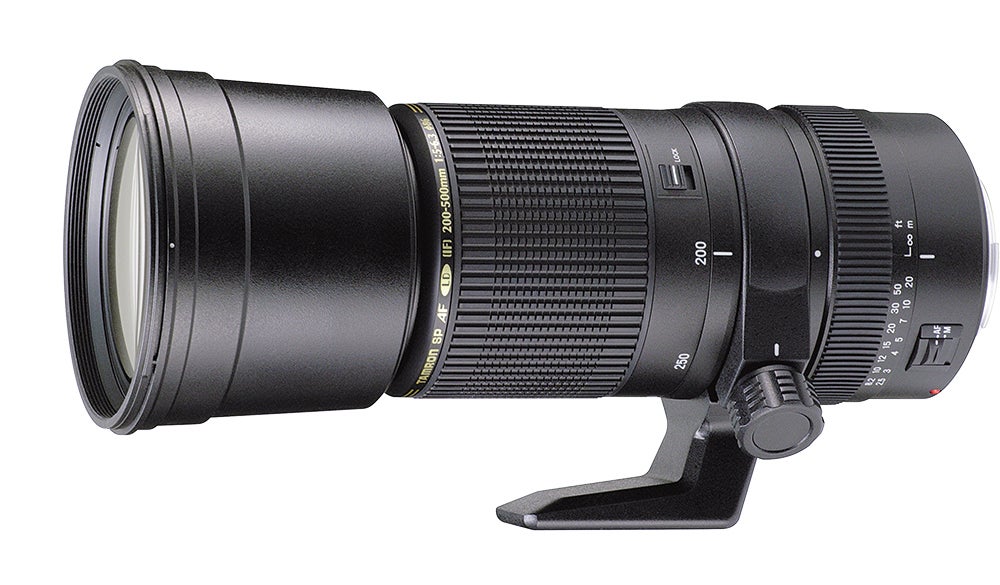 If you don’t fancy the huge range of the Sigma 50-500mm lens, the Tamron 200-500mm f/4.5-6.3 is a good alternative. Like the Sigma 50-500mm, the Tamron 200-500mm lens lacks image stabilisation, although its simpler design means it weighs a little less at 1.24kg.
If you don’t fancy the huge range of the Sigma 50-500mm lens, the Tamron 200-500mm f/4.5-6.3 is a good alternative. Like the Sigma 50-500mm, the Tamron 200-500mm lens lacks image stabilisation, although its simpler design means it weighs a little less at 1.24kg.
Another great choice for wildlife and sports photographers on a budget, the Tamron 200-50mm lens is available in Canon EF, Nikon F and Sony mounts. Although the lens is designed for full-frame sensors, it will obviously work on cameras with APS-C sensors, where it offers the equivalent of a 350-750mm lens. It is worth noting that due to the lack of a built-in focusing motor in the Nikon version, it will only work in manual-focus mode on entry-level Nikon DSLRs.
Sigma 50-500mm f/4.5-6.3 EX DG APO HSM
Price: £300-£500
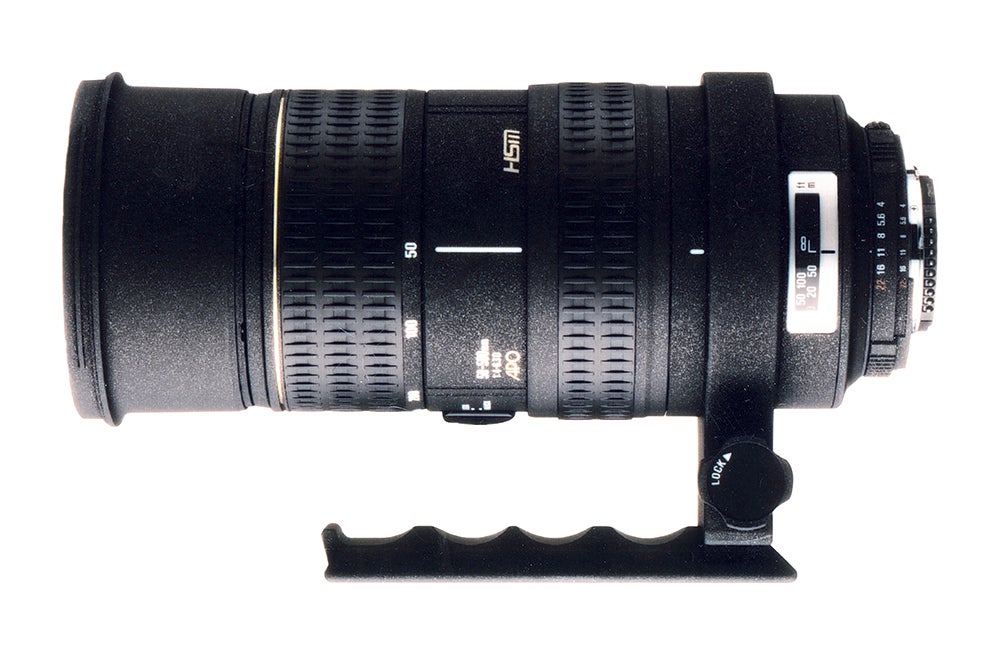 Now replaced by an optically stabilised version, the original Sigma 50-500mmm f/4.5-6.3 lens is a favourite among wildlife photographers. Like a superzoom lens, the 10x zoom lens may not produce images that can match the sharpness of a 300mm or a 70-200mm lens, but what it does provide is a lens that can cover most focal lengths that wildlife and sports photographers will want, especially if it is used on a DSLR with an APS-C-format sensor.
Now replaced by an optically stabilised version, the original Sigma 50-500mmm f/4.5-6.3 lens is a favourite among wildlife photographers. Like a superzoom lens, the 10x zoom lens may not produce images that can match the sharpness of a 300mm or a 70-200mm lens, but what it does provide is a lens that can cover most focal lengths that wildlife and sports photographers will want, especially if it is used on a DSLR with an APS-C-format sensor.
With 20 elements in 16 groups, and weighing a hefty 1.84kg, the lens has rightly earned the nickname ‘The Bigma’, and it has attained cult status among enthusiast wildlife photographers. The later version with optical stabilisation has obvious advantages, but the original version can be found at bargain prices, although demand for the different Sigma, Nikon, Canon, Sony and Pentax mounts means that prices can vary quite a lot.
Tamron SP AF 90mm f/2.8 Di Macro
Price: £130-£200
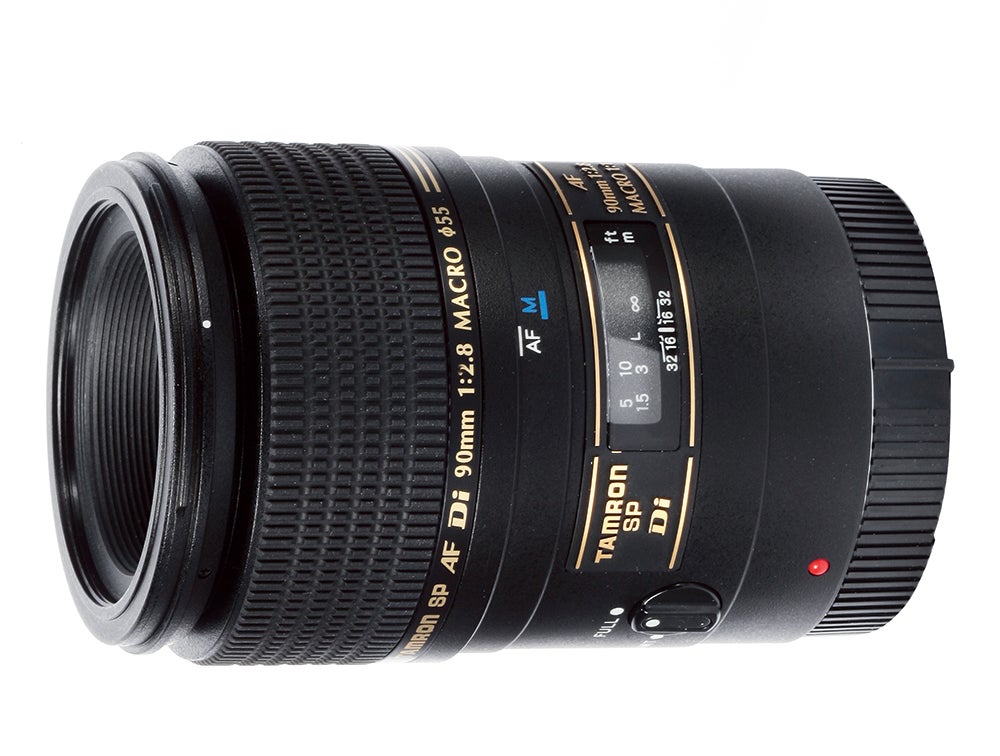
Another lens that has now been updated with optical stabilisation is Tamron’s 90mm f/2.8 macro. However, the older Di version (Model 272E) is still considered something of a classic.
The Di version of the lens is a redesign of the classic 90mm macro lens produced by Tamron in the 1990s, featuring a new optical coating for sharper images with digital camera sensors. Compared to its Canon and Nikon equivalents it’s a fairly compact, lightweight lens, but autofocus is relatively slow, with the barrel extending significantly at its 29cm minimum focus distance. Pulling the focus ring back towards the camera engages manual focus.
With excellent image sharpness and an equivalent field of view of 135mm on a DSLR with an APS-C sensor, this is one of the best macro lenses you can buy for DSLRs, and is available at a bargain price second-hand.





